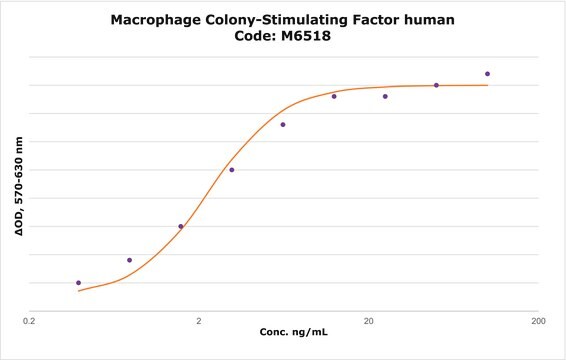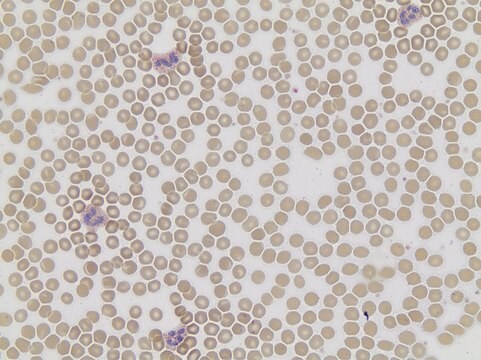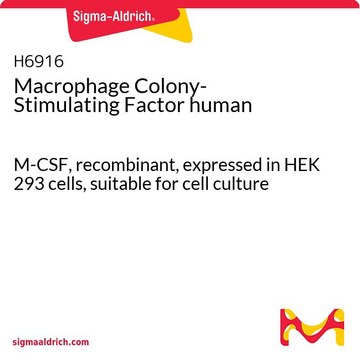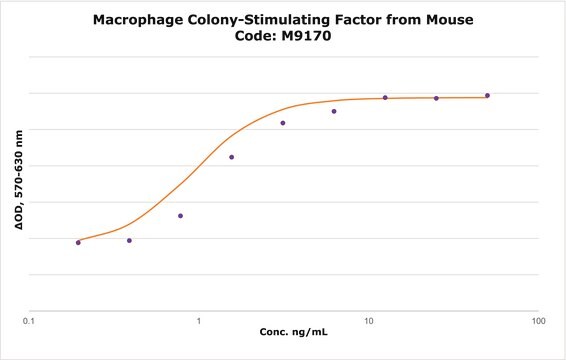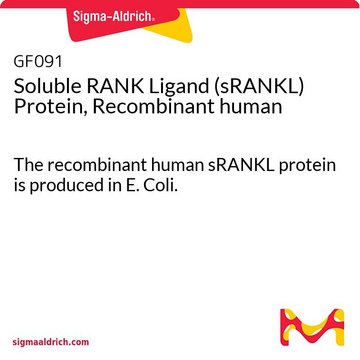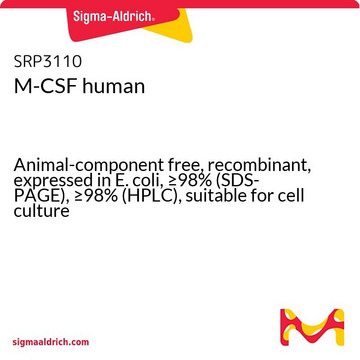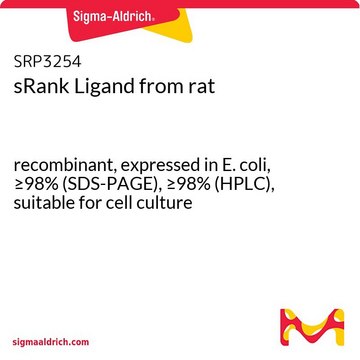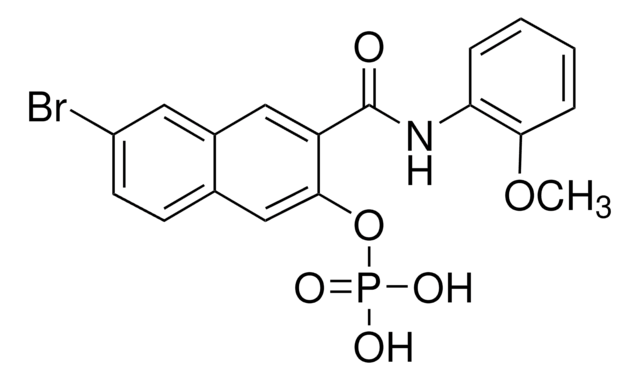R0525
RANK Ligand from mouse
≥98% (SDS-PAGE), recombinant, expressed in E. coli, lyophilized powder, suitable for cell culture
Synonim(y):
Osteoclast differentiation factor (ODF), Osteoprotegerin ligand (OPGL), Receptor activator of NF-κB Ligand (RANKL), TNF-related activation−induced cytokines (TRANCE)
About This Item
Polecane produkty
pochodzenie biologiczne
mouse
Poziom jakości
rekombinowane
expressed in E. coli
Próba
≥98% (SDS-PAGE)
Formularz
lyophilized powder
siła działania
10.0-25.0 ng/mL ED50
opakowanie
pkg of 10 μg
warunki przechowywania
avoid repeated freeze/thaw cycles
metody
cell culture | mammalian: suitable
zanieczyszczenia
<0.1 ng/mg
<1 EU/μg
kolor
white
numer dostępu UniProt
temp. przechowywania
−20°C
informacje o genach
mouse ... Tnfsf11(21943)
Opis ogólny
Zastosowanie
Działania biochem./fizjol.
Postać fizyczna
Komentarz do analizy
Kod klasy składowania
11 - Combustible Solids
Klasa zagrożenia wodnego (WGK)
WGK 2
Temperatura zapłonu (°F)
Not applicable
Temperatura zapłonu (°C)
Not applicable
Środki ochrony indywidualnej
Eyeshields, Gloves, type N95 (US)
Wybierz jedną z najnowszych wersji:
Masz już ten produkt?
Dokumenty związane z niedawno zakupionymi produktami zostały zamieszczone w Bibliotece dokumentów.
Klienci oglądali również te produkty
Nasz zespół naukowców ma doświadczenie we wszystkich obszarach badań, w tym w naukach przyrodniczych, materiałoznawstwie, syntezie chemicznej, chromatografii, analityce i wielu innych dziedzinach.
Skontaktuj się z zespołem ds. pomocy technicznej

